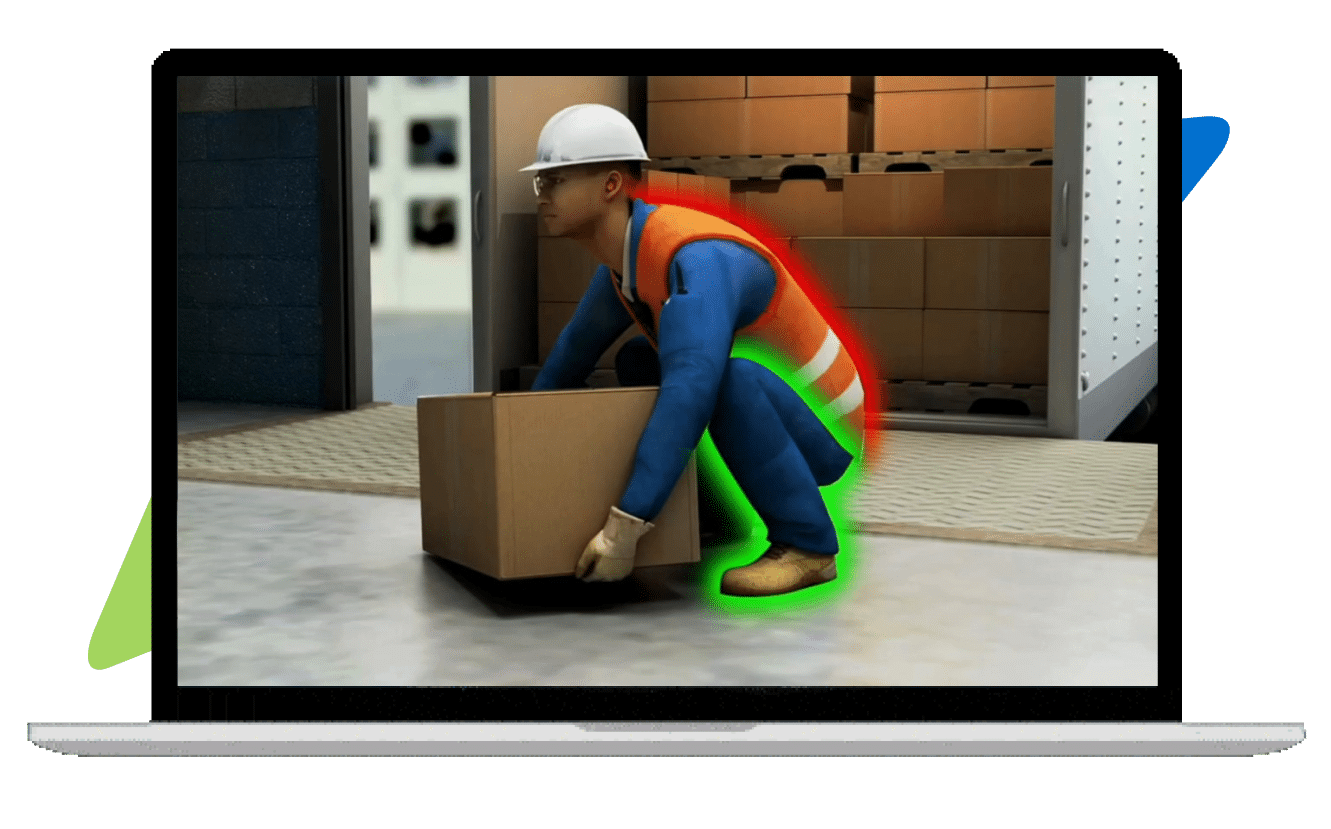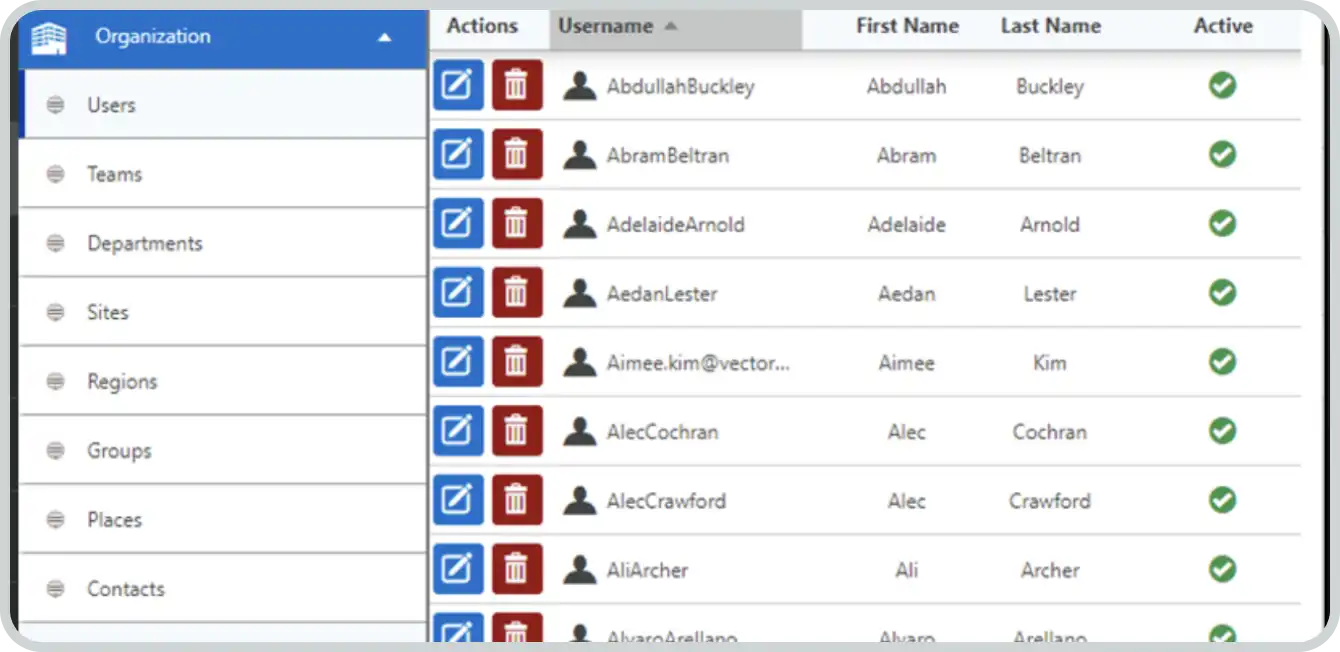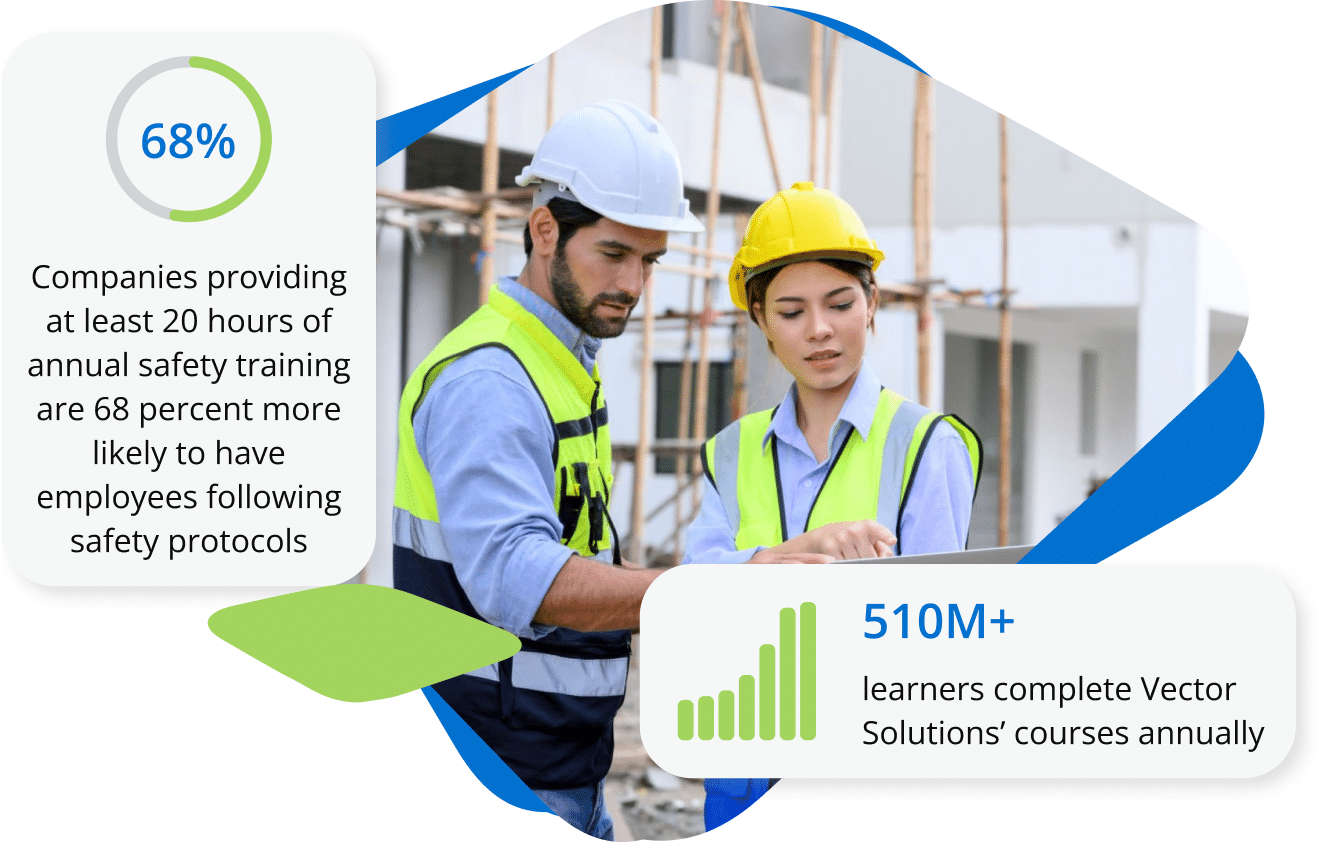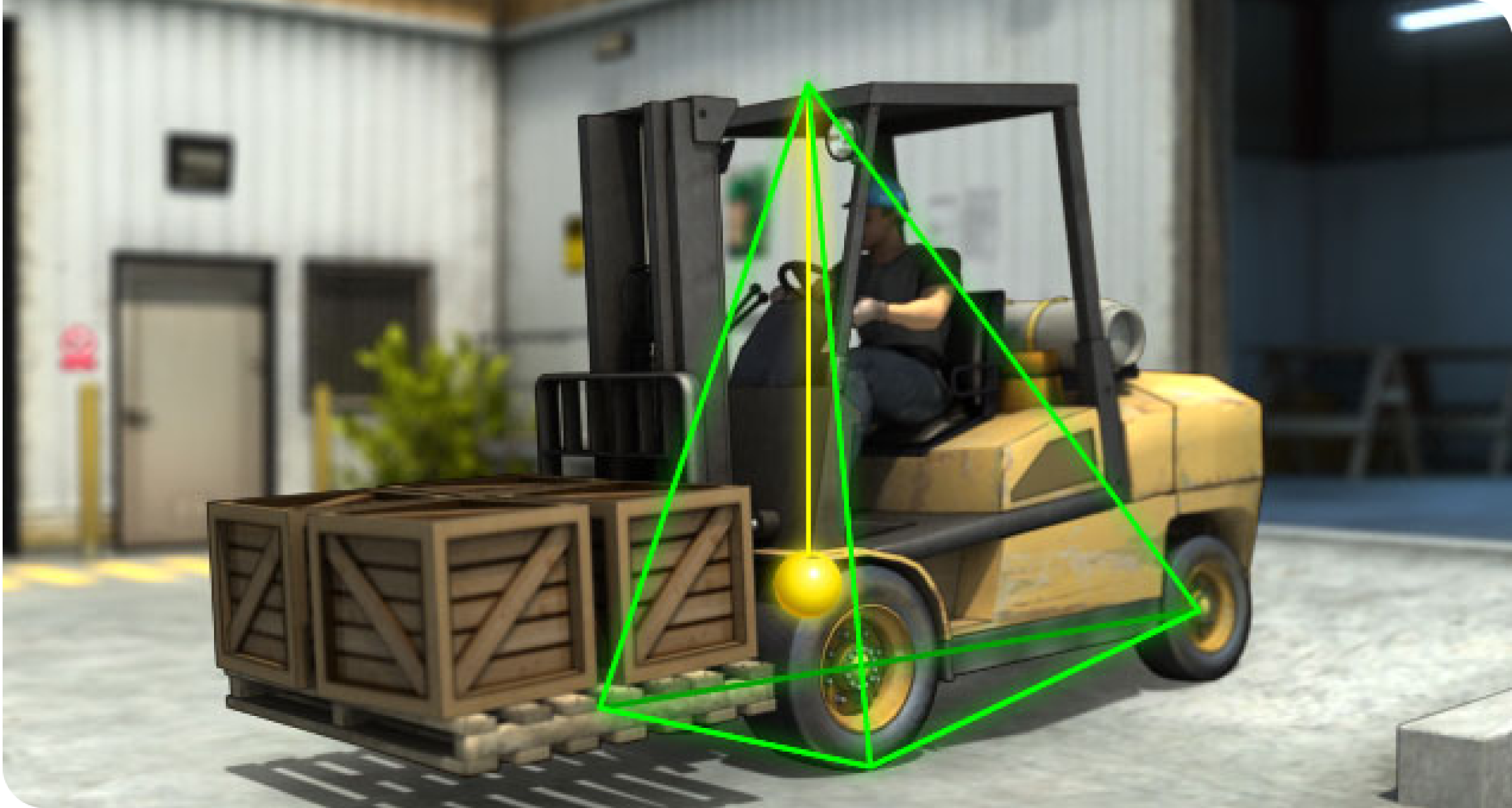“We’ve been able to offer more of a standardized training experience across all of our sites... And we’re able to see what people across the organization are doing much more easily. I’d really recommend Vector Solutions.”
Read the customer storyOnline Health and Safety Training
Deliver foundational safety training for your workforce and achieve compliance with critical industry-specific topics that meet safety training regulations and standards.


of employees report leaving a workplace because of unresolved safety issues.

of workers have experienced unsafe working conditions such as exposed wiring, slippery walkways, and unmarked exits.

online safety courses meticulously aligned with OSHA, EPA, and DOT standards to ensure the highest-level of safety best practices and keep the workforce safe and complaint.
#1 Online Safety Training Solution
Robust Safety Training
Address the most common hazardous situations in the workplace with online safety training that aligns with OSHA standards and regulations and supports comprehensive employee safety orientation.
- Reduce the risk of workplace injury
- Accelerate onboarding
- Increase hazard recognition
- Strengthen safety culture

Health and Safety Microlearning
Deliver focused, powerful training on topics such as PPE, electrical safety, equipment safety, first aid, fire safety, and more with award-winning courses employees can complete in about five minutes.
- Heighten safety awareness
- Drive skill retention
- Minimize work disruptions
- Based on real life safety scenarios

Transportation Safety and Compliance
Elevate your team’s performance with online transportation training, ensuring DOT compliance, minimizing risk, and prioritizing safety. Includes Entry Level Driver Training (ELDT), DOT hazmat regulations, and driver safety modules.
- Streamline DOT compliance
- Prevent incidents
- Boost fleet productivity

Industry-Specific Safety Training
Standardize training programs and empower teams with online courses relevant to job roles and overall operations in your industry.
- Implement proper procedures
- Operate safely and meet compliance guidelines
- Hone job-specific safety skills
- Mitigate risk

OSHA Outreach Training
Utilize OSHA-authorized training, including OSHA 10 and OSHA 30 for general industry and construction, as well as HAZWOPER 24-Hour, 40-Hour, and 8-Hour Refresher online training.
- Obtain compliance certification
- Address the latest regulations
- Avoid legal complications

Multilingual Safety Training
Deliver consistent training for multilingual learners and ensure that every employee can work safely and efficiently with Vector Solutions’ AI and human-translated courses.
- Break down communication barriers
- Enhance retention of key concepts
- Foster an inclusive safety culture

Transform Safety and Prevention
-
Improve Compliance
Meet compliance requirements and decrease liability with courses based on industry standards established by OSHA, EPA, and other regulatory bodies.
-
Reduce Incidents
Equip employees to understand safety procedures, use personal protective equipment correctly, and reduce the risk of injury.
-
Streamline Training Efforts
Leverage high-quality, off-the-shelf HSE training developed by safety experts and reclaim the time and resources training managers spend developing their own content.
Explore Industry Specific Safety Training
See all courses-
K–12 Education
Learn more -
Higher Education
Learn more -
Law Enforcement
Learn more -
Fire Departments
Learn more -
AEC
Learn more -
Industrial Manufacturing
Learn more -
Transmission & Distribution
Learn more -
Power Generation
Learn more -
Facility Management
Learn more
Enhance Learning with Feature-Rich Training
Improve Knowledge Retention with High-Quality 3D Graphics
Seamless Set Up and Scalability
Deliver and Track Training
Leverage Real-time Training Data
Enhance Training with Powerful Integrations
Improve Knowledge Retention with High-Quality 3D Graphics

Prepare employees to handle workplace responsibilities and risks safely. With 3D graphics, employees can learn to recognize at-risk behavior or situations without actually exposing themselves to harm.
Seamless Set Up and Scalability

Effortlessly launch online training with Vector LMS. Import employees from Excel, sync HR data, manage training across sites, configure secure access, and scale with ease.
- Configure access rights with security roles
- Easily map employees to teams, departments, and sites
- Create custom groups – just like in your organization
Deliver and Track Training

- Build and assign new employee onboarding and orientation training
- Schedule safety and skills development courses
- Manage required compliance training
- Update assignments instantly for the whole company
Leverage Real-time Training Data

- Schedule recurring reports to email automatically
- Utilize advanced compliance reporting and track required training
- Credit training in the field (OJT)
- Confirm that employees have read policies and compliance documents
- Verify that employees can successfully complete a procedure
Enhance Training with Powerful Integrations

- Review training histories of employees involved in incidents to gauge what corrective training or retraining may be needed
- Integrate training with key safety metrics, compare data across modules, and discover how training impacts your safety program
Awards and recognition
-
2023 Telly Gold Award – General Health & Safety
-
2023 Telly Silver Award – General Health & Safety
-
2023 Telly Bronze Award – General Health & Safety
-
Brandon Hall Excellence in Learning - 2022
-
Training Industry Top 20 Employee Health, Safety & Wellness Company

Strengthen compliance, hazard awareness, and risk mitigation with Vector Solutions’ online safety training.
OSHA
HAZWOPER
HAZCOM
GHS
EPA
DOT
CCOHS
-
-
“We wanted to build a stronger safety culture and lower safety incidents. We were able to transform dull and mundane training that our employees didn’t get much out of and increase individual responsibility for safety. Vector Solutions is what got us there.”
Operations Manager
Read the customer story -
“I’m a Vector champion. I’m very well sold on the product and very happy with the service that I get from the folks at Vector.”
Henry Ramsay
Organizational Development Manager
Read the customer story








Safety Training Libraries
-
Award-Winning Health and Safety Training
Deliver nationally-recognized interactive safety courses based on OSHA & EPA requirements and industry best practices
Explore Courses
-
Safety Microlearning
Reinforce safety knowledge and skills with bite-sized courses
Explore Courses
-
Transportation Safety
Transform fleet efficiency, boost safety performance, and ensure DOT compliance
Explore Courses
Related Resources

Safety Training for Easy Compliance Guide

Health, Safety & Environment (HSE) Premium Online Training Library

Health, Safety & Environment (HSE) Microlearning Training Library

Enhancing Worker Safety Training from Compliance to Prevention and Performance
August 17, 2023

Transportation Safety & Compliance Library
































